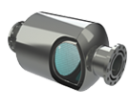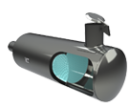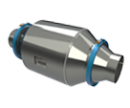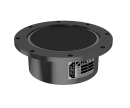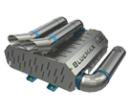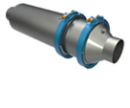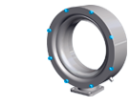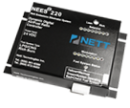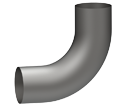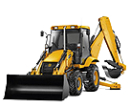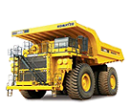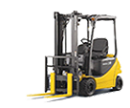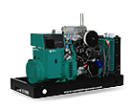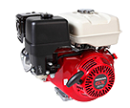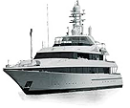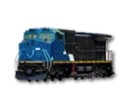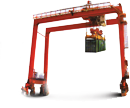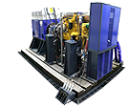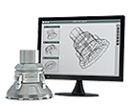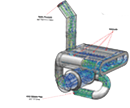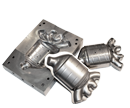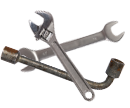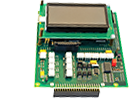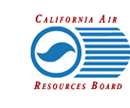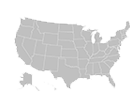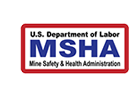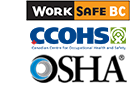Emission control solutions for LPG, CNG and gasoline engines
Nett receives California ARB Verification for its BlueCAT 300™ System
Nett Technologies Inc. has received verification from the California Air Resources Board (ARB) for its proprietary advanced BlueCAT 300™ Closed-Loop Catalyst System. The California ARB has verified the Nett BlueCAT 300™ system for its mobile sources LSI-2 measure. The verification covers specific LSI (large spark ignited [over 25 hp]) engines, model years 1990 through 2001 used in unregulated off-road applications operating on propane (LPG) fuel. Model years 2001 through 2004 are also covered for non-complying phase-in engines. The BlueCAT 300™ Closed-Loop Catalyst System employs a high performance 3-way catalytic converter and a dynamic digital air-fuel ratio controller to reduce emissions of uncontrolled engines to 1.0g/hp-hr of NOx + HC, consistent with a Level 3a classification. Specific engine criteria for which the BlueCAT 300™ system has been approved may be found in Executive Order G-07-017 which has been posted on the CARB website (http://www.arb.ca.gov/msprog/offroad/orspark/verdev.htm).
CARB’s off-road LSI measures are primarily targeted towards forklifts but also include other LSI engine powered equipment. Estimates of the number of uncontrolled LSI engines in California to be retrofitted range from 10,000 to 20,000. The engines used in the majority of these applications are similar to or derived from early 1980s automobile engines. NOx (oxides of nitrogen) and HC (hydrocarbons) emissions from these engines are considerably higher than that of today’s automobiles. It is these NOx and HC emissions that contribute most strongly to the formation of smog, often visible in large urban centers. Smog is also a significant health concern as it can inflame breathing passages, and can cause eye and nose irritation, shortness of breath, wheezing, and coughing. The reduction in NOx and HC emissions from LSI engines may improve working conditions inside buildings as well as reducing smog formation in the environment.
3-Way Catalytic converters, such as used in Nett’s BlueCAT 300™ system, work by converting harmful NOx, HC and CO (carbon monoxide) emissions into CO2 (carbon dioxide) and water. For a 3-way catalytic converter to achieve maximum reductions, the relative amounts of NOx, HC and CO emissions must balance. These emissions are balanced when the engine operates at a specific air/fuel mixture called the stoichiometric air-fuel ratio. Modern automobiles use fuel injection and on-board computers to keep the engine at the stoichiometric ratio, whereas off-road LSI engines in use today are not as sophisticated. Nett’s BlueCAT 300™ system uses a digital air-fuel ratio controller which incorporates an oxygen sensor, solenoid and the electronic controller to maintain off-road LSI engines at stoichiometric. When paired with the high performance catalytic converter used in the BlueCAT 300™ system, emissions reductions are maximized.
BlueCAT 300™ catalytic converters are most often configured as a catalytic muffler which is an exact-fit replacement for the original equipment’s muffler. Due to the limited space in the engine compartment of most LSI powered equipment, placing the catalytic converter inside the muffler is often the only solution. Since the mufflers are exact replacements, installation is simple and convenient. Nett has over 5,000 muffler designs for virtually any type or model of equipment. The BlueCAT 300™ air-fuel ratio controller features a built-in diagnostic function which allows constant visual monitoring of the engine’s fuel system by the operator and/or service technician. Such innovative technology eliminates the costly requirement for additional calibration monitors.
Information on California Air Resources Board (ARB)
California’s Legislature established the Air Resources Board (ARB) in 1967 to:
Attain and maintain healthy air quality.
Conduct research into the causes of and solutions to air pollution.
Systematically attack the serious problem caused by motor vehicles, which are the major causes of air pollution in the State.
For more information, please visit CARB’s website at: http://www.arb.ca.gov/homepage.htm

